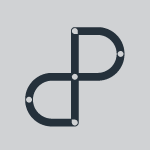A crucial ingredient for successful drug delivery device development
on LinkedIn:
Coming back from the Christmas and New Year break, I realised how blessed I am. I’m in good health, I’ve been able to spend enjoyable time with my family and I’ve now returned to my exciting job surrounded by a team of enthusiastic and very smart people.
For many people, the Christmas period means longstanding traditions, bringing different generations of people together and including extensive travel to reconnect with friends and family –disrupting daily routines. That’s fine for those of us who are fit and healthy. But it can be difficult for some people to cope with – those affected by a long-term illness, for example.
Travel and the breaking of routines can cause problems for people who suffer from the so-called diseases of ageing – such as cancer, diabetes and heart disease – or younger people burdened with chronic conditions like rheumatoid arthritis and multiple sclerosis. It can affect the management of their disease and require changes to their therapy regimen. They may need to adjust their drug intake to different time zones, for example, or make special arrangements for the transport and storage of their drugs at a certain temperature, as well as carrying around delivery systems such as injection devices and inhalers.
All this is on top of the normal day-to-day management of a long-term illness – which can often be complicated enough for the patient. Even the simplest routine – such as swallowing a tablet at the right time – can prove difficult for some patients. Memory problems, for example, might make it difficult for an elderly patient to reliably take their medication at the right time – and leave them at risk of accidentally overdosing or not getting enough of the drugs.
That’s why user insights are crucial to successful drug delivery device development. We use our unique diialog™ service – a combination of miniature sensing technology and sophisticated algorithms – to unlock the secrets of a truly patient-centric device. Trial users of a new product often tell you what they think you want to hear. With the help of diialog, we can discover what really happens – whether the device is used correctly and the drug is stored at the correct temperature, for example, or whether an elderly patient struggles to remove the cap. These valuable insights can then feed back into a new generation of drug delivery technology to help patients cope with their therapy regimen – both at home and when out and about.
Which brings me neatly back to the subject of travel – I’ll be travelling extensively with my drug delivery colleagues in the coming weeks to showcase the diialog service and highlight the crucial role of user insights. We’ll be at the Drug Delivery Partnerships event in Florida next week, where my colleague Uri Baruch will be speaking about the future of drug delivery and the crucial role of user insights. And at Pharmapack in Paris in February, we will be presenting our vision of smart devices and their integration with a new generation of packaging.
At the Global Drug Delivery & Formulation Summit in Berlin in March, my colleague Tom Lawrie-Fussey will be talking about how we use diialog to enable informed design development decisions. Meanwhile, I will be moderating an industry panel at the summit, discussing how user insights can help with the selection and development of appropriate drug delivery systems.
So a busy time for us in the drug delivery team. But with one clear focus – putting the patient at the heart of every drug delivery device development.

Bastiaan de Leeuw
Head of Business Development - Drug Delivery